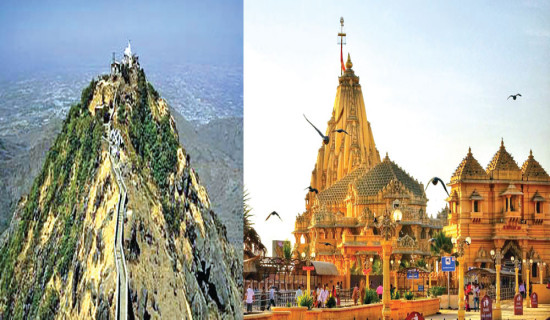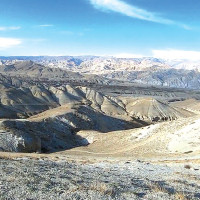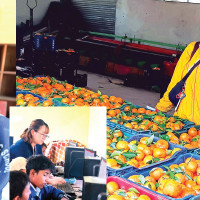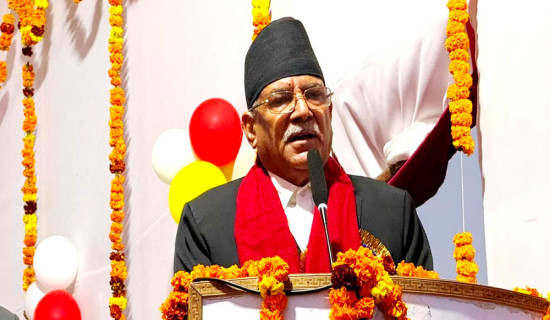- Saturday, 17 January 2026
Sinja Valley: Historical Legacy And Challenges
Sinja Valley, situated in Jumla district, Nepal, at an average altitude of 2600 m, has a rich historical legacy and is associated with the origin of the "Khas" language. The region holds valuable archaeological evidence, including the earliest examples of "Devnagari" script dating back to the 13th century. These archaeological sites can be found in Jumla, Surkhet, and Dailekh districts. The valley is believed to have been the centre of the Khas Kingdom or Malla Kingdom, which existed from the 11th to the 14th centuries. It boasts significant historical remnants, such as a ring of enormous monolithic stone columns and ruins from ancient settlements. One of its notable attractions is the ancient wooden King and Queen Bridge, renowned for its exceptional wood carvings. The valley's historical significance is further underscored by the presence of old palaces, temples, and settlements, leading to its inclusion on the UNESCO World Heritage Sites list under the cultural category. Sinja Valley preserves a glorious history that offers insights into Nepal's past and its cultural heritage.
Historical anecdotes suggest the existence of the "Khas Kingdom" in western Nepal, with Sinja as its centre, separate from the Khas Kingdom mentioned in the Mahabharata. The Khas Kingdom's involvement in the Kurukshetra war, estimated between 6000 BCE and 500 BCE according to different claims, is a topic of interest. However, the roots of both states can be traced back to the same origin. The kingdom was disbanded earlier for certain reasons but was later reunited in the 12th century. At its peak, the empire's boundaries encompassed the entirety of western Nepal, the present-day Uttarakhand state of India, and southwestern Tibet. The Khas kings of western Nepal are believed to be descendants of King Naagraj, with Ripu Malla (1312-13) among them. An inscription near the Ashoka Pillar in Lumbini, dating back to 1093 AD, mentions "Om mani padme hum," suggesting their Tibetan connections. Additionally, the stone pillar "Kirtikhamb," erected by Prithvi Malla in 1357 AD, displays the family tree of the ‘Khas dynasty.’ The Khas kingdom eventually fragmented after Malaya Burma, as his sons claimed their kingdoms, which later became part of the Baise Chaubise's kingdoms of Nepal.
Culture and farming
The highly fertile river valley, traditional irrigation system, large area of forests and rangelands for livestock grazing, and laborious people maintained the supremacy of the Sinja as the power centre of the Khas Kingdom’ through sustained agriculture. Even today, if we compare the outmigration rate from Sinja and other villages in Jumla, we still find very limited outmigration from Sinja, and this shows the higher potential for a prosperous life in the valley. The local people in Sinja Valley are strongly bound to their culture and traditions. Even today, family members are urged to be at home during Dhan Ropai (paddy harvesting time) and Kulpuja, and this practise is highly important to maintain the continuous supply of human labour in the farming system as well as the social integrity of the region.
Sinja Valley includes three rural municipalities: Hima, Kanakasundari, and Sinja. Historically important sites like Kanakasundari temple, the palace of legendary King Birat, and Pandavgufa are situated in Kanakasundari rural municipality. Agriculture and livestock form the major occupations of people in Sinja, where the farming of the Kalo Marshi rice variety with the cold-tolerant gene produces unique red rice with a special taste. The livestock forms a great complement to the farming system in Sinja Valley; among them, the oxen are the main component of farming as they are essential for ploughing. The cows, oxen, buffalo, and goats are integral parts of the agroecosystem of Sinja Valley, which not only provides animal products but also traditional manure for agriculture. However, apple farming is also one of the major sources of household income in the region, and Jumla ranks first in Nepal for tasty apples. The rural municipality is now well connected by road to Surkhet (Karnali Highway), the provincial headquarters of Karnali province, with immense potential for the trade of local products. Since Sinja Valley lies on the way to Rara Lake, it can attract a large number of tourists during the spring (March–May) and Autumn (September–October) seasons, which can benefit locals from hotel and lodge business and the sales of apples and local products. Kala Marsi rice, local legumes, potato curry, millet, and buckwheat bread could be highly rewarding local products for visitors.
Changing Sinja
With good exposure to the developed regions, education, livelihood options, trade opportunities, and agricultural practises, the lifestyle of Sinjali has begun to change. The connectivity with other towns through road networks (Karnali Highway) has enhanced the potentiality of Sinja to be more productive and prosperous. However, it is highly recommended to introduce some frugal innovations in existing agricultural systems to meet the ever-increasing demand for local agricultural products and match it with the increasing scarcity of human resources and affordability constraints for agriculture. Frugal innovation includes designing products, services, and business models to reduce complexity and total lifecycle costs while providing high-value and affordable solutions to producers and customers in developing countries like Nepal. The major agricultural products in Sinja are rice and barley in lowland farms and wheat, beans, maize, millet, potatoes, and apples in upland farms. Farming in Sinja Valley is mainly driven by animate energy and ecosystem services without the use of modern means, chemical fertilisers, or pesticides, and this can be regarded as a highly resilient model with improved production and higher sustainability.
Sinja Valley has more unemployed people and limited financial resources for further investments in agriculture. Hence, it is more appropriate to introduce measures that are low in capital and rich in labour as a pragmatic transition to intermediate technology. The introduction of mechanised small-scale tools like jab planters, pedal threshers, or renewable energy like improved water mills could be some options to reduce farming costs. Similarly, some modifications to traditional tools made by local blacksmiths could be introduced. And in particular, the mixed-species farming system, crop rotation, the use of animal manure to regulate soil fertility, and the traditional practise of pest and weed management could be improved so that the use of chemical fertilisers, pesticides, and herbicides could be avoided. Similarly, we could maximise the use and technique of animal manure, animal manure mixed with dried leaves, and agriculture residue remaining on the field after harvesting to maintain soil organic matter and improve soil fertility. The environmental conditions of Sinja Valley are also changing rapidly, including warming temperatures, erratic rainfall, and snowfall patterns, thereby causing floods in the valley. These changes would certainly pose negative impacts on existing agriculture and livestock in the Sinja Valley, which is a critical challenge to the sustainability and prosperity of Sinja. Local people should be made aware of the recent environmental changes and their potential impacts on agriculture and livestock, and they should also be trained in local adaptation.
(Dr. Tiwari is a plant ecologist at the Central Department of Botany at Tribhuvan University.)

















